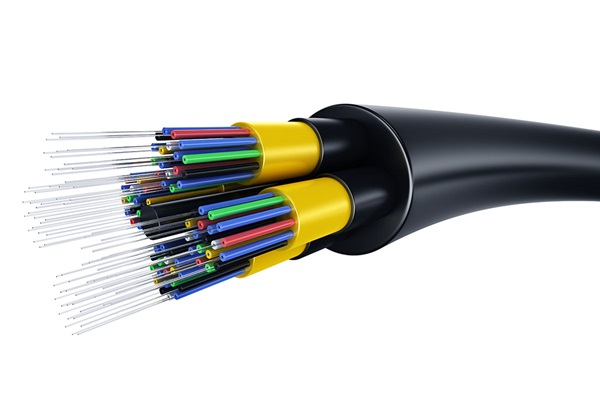
The Federal Ministry of Works (FMoW) and the Federal Ministry of Communications, Innovation and Digital Economy (FMoCIDE) have established a Joint Standing Committee on the Protection of Fibre Optic Cables to address the persistent issue of fiber optic cuts and damages caused by road construction and rehabilitation activities.
These disruptions have had a significant negative impact on telecommunications services across Nigeria, leading to network outages and increased operational costs for service providers.
The committee was inaugurated at the boardroom of the FMoW by the permanent secretary, Engr. Olufunso Adebiyi and his counterpart at FMoCIDE, Engr. Farouk Yusuf, in the presence of the executive vice chairman (EVC) of the Nigerian Communications Commission (NCC), Dr. Aminu Maida. The committee comprises key personnel from both ministries and the NCC, ensuring cross-sector collaboration.
The primary objective of the joint standing committee is to establish and maintain clear communication and coordination mechanisms between the two ministries and the NCC to prevent damage to telecommunications fiber optic cables during road construction and rehabilitation projects.
While inaugurating the committee, Adebiyi tasked its members with developing practical solutions to reduce fiber optic damage resulting from road construction, maintenance activities and vandalism. He emphasized that frequent fibre cuts have caused severe service disruptions nationwide, underscoring the need for a structured approach to mitigate these challenges.
“The committee will serve as a coordinating body for all issues related to the protection of fibre optic cables before, during and after road construction or maintenance activities,” he stated.
He further directed the committee to meet regularly to discuss emerging challenges, propose industry-wide solutions and establish standard engagement processes and procedures between construction firms, telecom operators and government agencies. Additionally, the committee is expected to share monthly performance reports to track progress.
“They are also expected to develop an instant communication mechanism to facilitate prompt information sharing among all stakeholders,” he added.
Adebiyi assured that moving forward, the placement of fibre optic cables will be factored into the planning, design and construction of road infrastructure nationwide. This includes incorporating fibre ducts into road designs to minimise damage during future construction activities.
To enhance ground-level implementation, Adebiyi noted that the committee would work closely with Federal Controllers of Works (FCW) across the country to ensure fibre optic protection is integrated into project planning and execution. He stressed the need for strong collaboration with telecom operators to prevent network disruptions during ongoing and future road projects.
On his part, Yusuf highlighted the critical role of fiber optic networks in Nigeria’s digital economy. He noted that fiber infrastructure forms the backbone of broadband connectivity, enabling seamless fixed and mobile internet services that drive economic growth and technological innovation.
“The work of this committee is crucial to ensuring that telecommunication services are not hampered by construction activities,” he stated.
Maida emphasised the strategic importance of the committee’s work, noting that reducing fiber cuts will significantly improve network reliability across Nigeria.
“This is a pivotal moment for the telecommunications industry and its customers. Fibre networks are the foundation of Nigeria’s broadband ecosystem, providing the high-capacity backhaul required for ultra-fast 4G and 5G speeds. These next-generation mobile technologies rely on fiber infrastructure to deliver low latency, high reliability and seamless data transmission,” he explained.
He revealed that in 2023 alone, over 50,000 fibre cuts were recorded across Nigeria, with approximately 30,000 attributed to federal and state road construction activities. He cited major network outages, such as the February 2024 nationwide MTN network disruption, as examples of the severe impact fibre cuts have on the telecom sector.
“A key factor contributing to these fiber cuts is the lack of a structured coordination mechanism between road construction companies and fiber infrastructure operators,” Maida stated.
Maida expressed optimism that the committee’s efforts would lead to a significant reduction in fiber cuts, thereby: Minimising network outages and improving service reliability, avoiding unnecessary expenditures on fiber repairs and reducing the need for redundant network routes that increase operational costs.
“This initiative is not just for the benefit of the telecommunications industry but for all Nigerians. Every time a fibre cut occurs, consumers experience service disruptions. The industry is forced to invest in costly redundancy measures, but if we can prevent these avoidable disruptions, operators can redirect resources towards network expansion and infrastructure improvement,” he added.
The formation of the committee marks a proactive step towards addressing the long-standing issue of fibre optic cuts in Nigeria. By fostering collaboration between key stakeholders, the government aims to strengthen the country’s digital backbone, improve telecom service reliability and enhance economic growth.
With this initiative in place, industry experts and consumers alike remain hopeful that Nigeria’s telecommunications infrastructure will be better protected, ensuring seamless connectivity for all.


